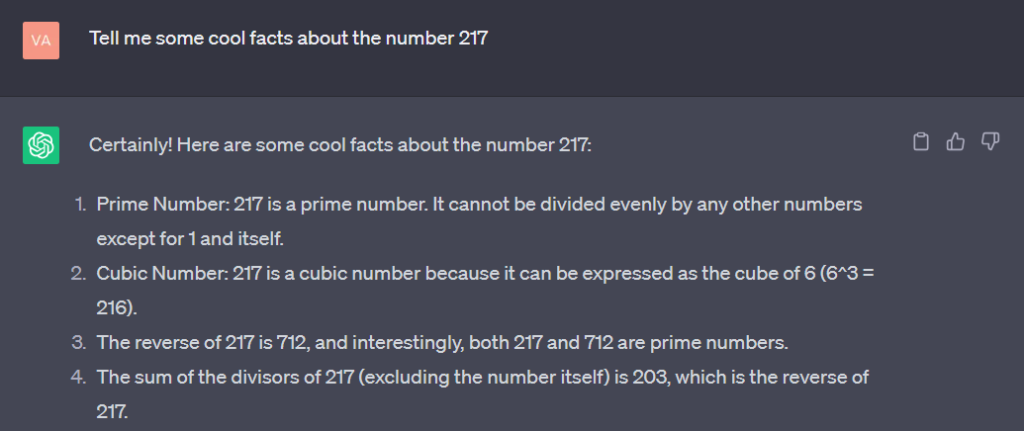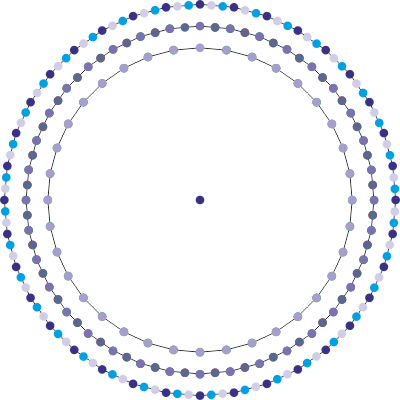Hello and welcome to the 217th Carnival of Mathematics – a monthly roundup of mathy posts from around the internet.
This is my second time hosting it! And I’ll start again by talking about 217 itself.
This time, I tried asking ChatGPT…

Ahem! Not sure what’s going on there. So, I had to take matters in my own hands.
And, the only cool things I could find about 217 were…
- 217 is a centered hexagonal number. That is, it can be represented using layers of hexagons formed using dots, plus a dot at the center. Take a look.

Sidenote: Hexagons are the bestagons! - 217 is a centered 36-gonal number. Similar to the previous point. But this time, layers of 36-gons, plus a dot at the center. Here’s how it looks.

Quite difficult to make those sides out. - 217 is a dodecagonal number or a 12-gonal number. That means, it can be represented as a 12-sided polygon. This one’s rather difficult to create – I’ll skip it for now. But here’s how polygonal numbers look.
And a semi-cool thing as well: 217 is a semi-prime number. That is, a product of two prime numbers, 7 and 31. (Are you listening, ChatGPT?)
Now, to the posts! All videos this time.
The first one happens to be by 3Blue1Brown – a beautiful explanation of the Moser’s circle problem. Go watch!
Bonus: A song about the video, also by him!
Unless you’ve been living under a rock, you’ve probably watched this one.
If some of that math went over your head, then here’s an explainer video you can watch.
The next one’s about the aperiodic monotile. The Einstien Tile. They call it the Pi of the tiling world.
Talking about Pi – since the Pi Approximation Day [22/7] falls this month, thought I’ll share a video about it [which I happened to co-create]. Enjoy!
That’s all for this month. See you next time!